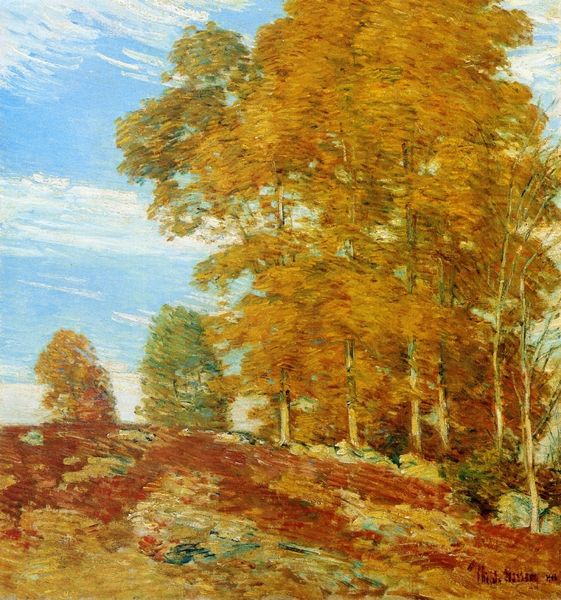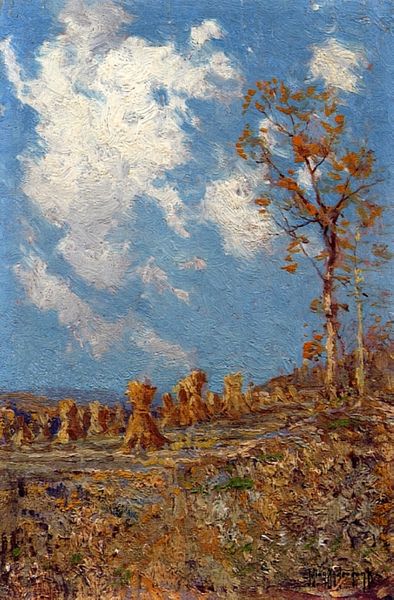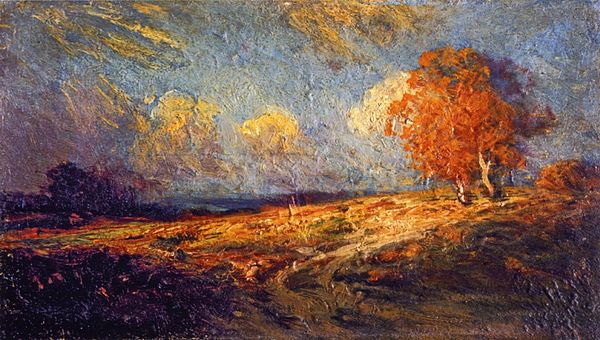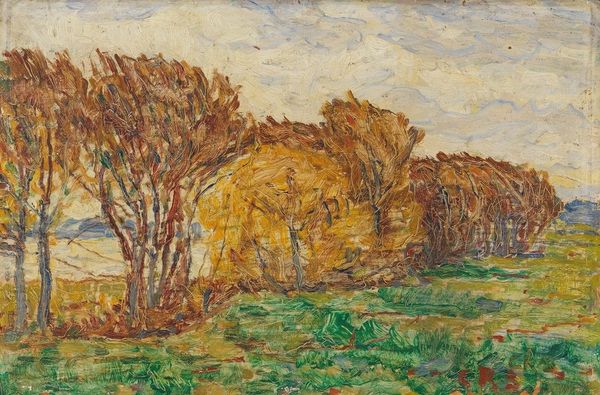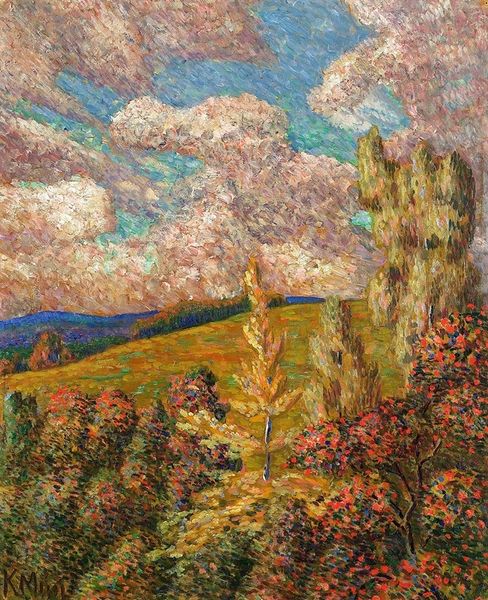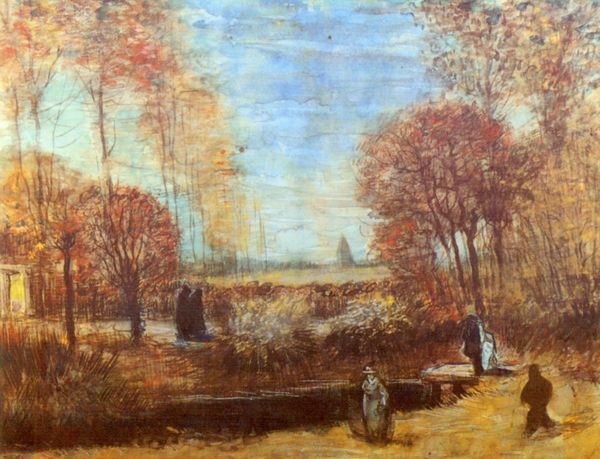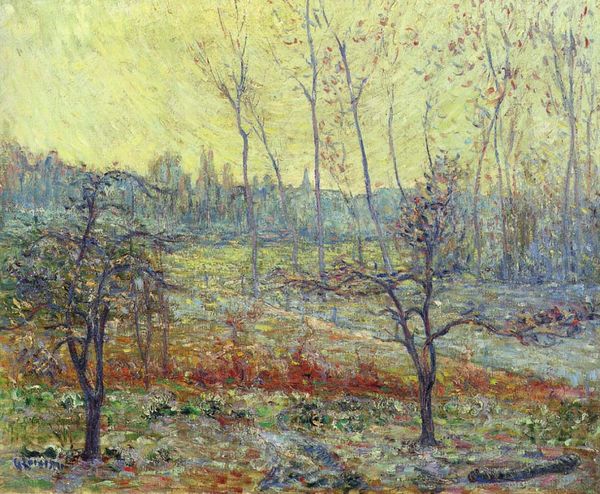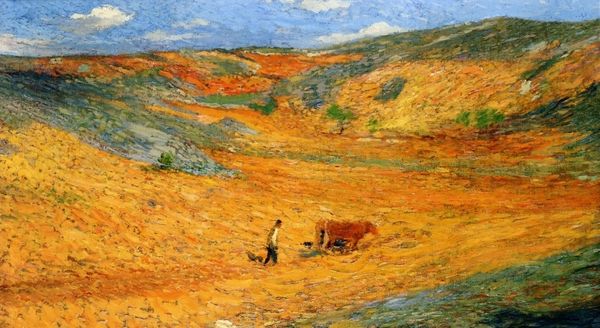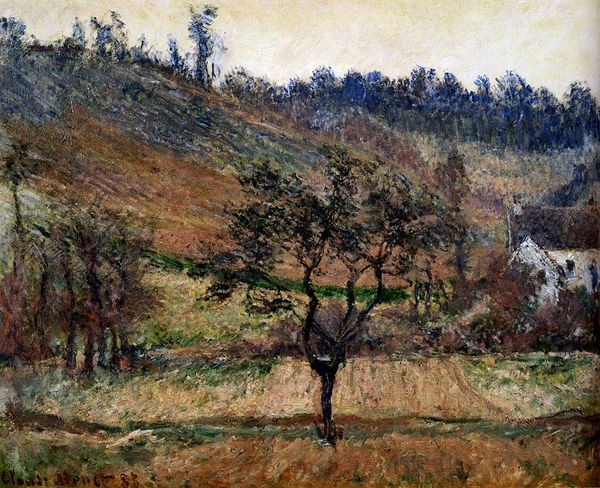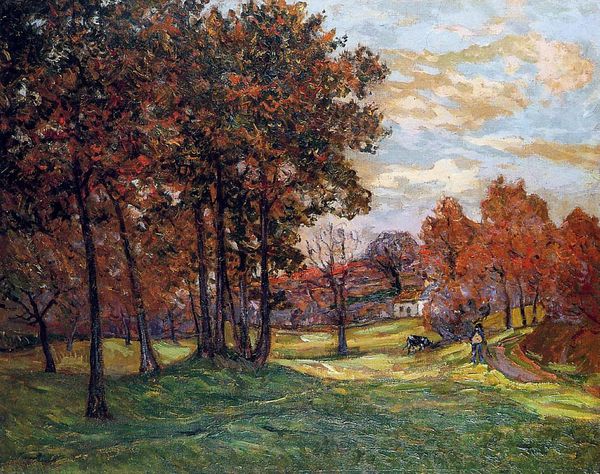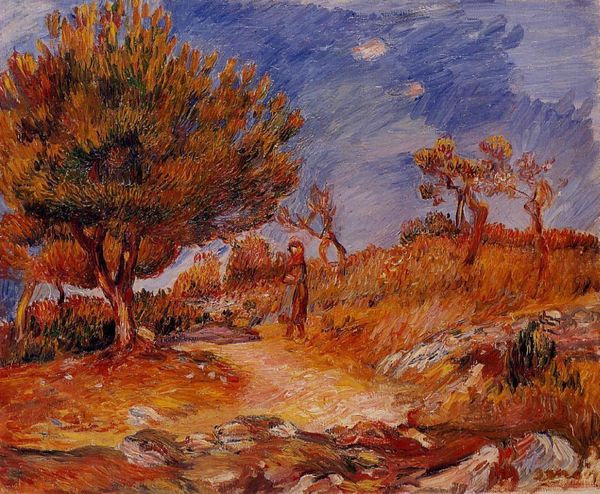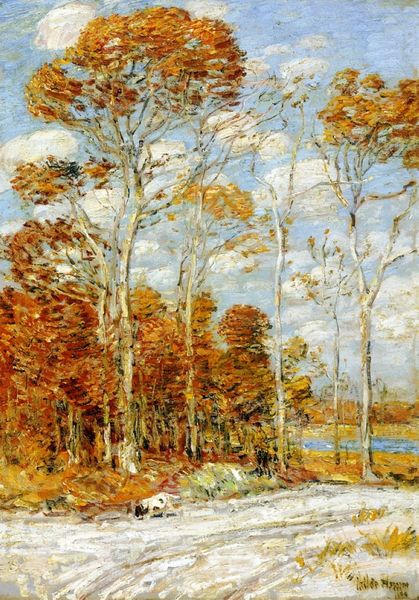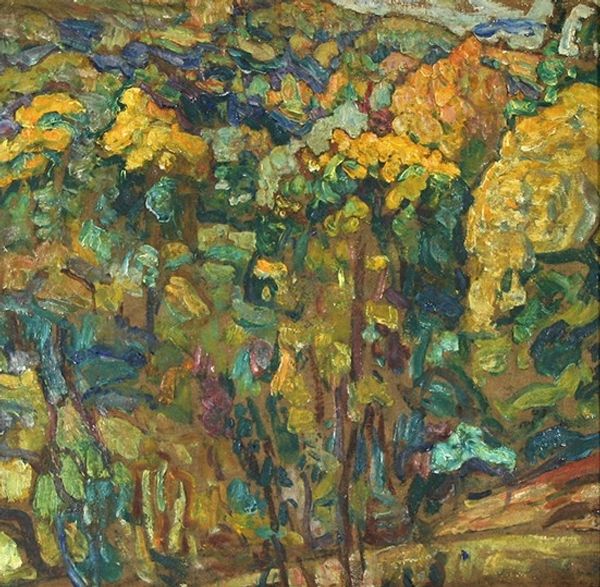
Copyright: Public domain
Editor: This is Childe Hassam’s "The Cedar Lot, Old Lyme," painted in 1904. Looking at this landscape in shades of gold and orange, I feel a sense of quiet, almost as if nature is preparing for a period of rest. What do you see in this piece, especially concerning the relationship between nature and societal forces? Curator: It is fascinating how Hassam, known for his Impressionistic cityscapes, turned his gaze to rural landscapes. The choice of the cedar lot isn't accidental. Think about the cedar tree, often used for practical purposes, from fences to medicinal remedies. It reflects a deeply rooted connection to the land. How do you perceive the relationship between human labor and this seemingly untouched natural setting? Editor: Well, there is a fence subtly running across the lower portion of the painting, a quiet intrusion of human order and control, setting boundaries, yet so integrated it becomes a part of the landscape. Curator: Exactly. The fence can be interpreted as both a boundary and a claim, reflecting how land ownership and use shaped the environment, a historical reality that influenced not just the landscape, but also the people connected to it, socially and economically. Hassam captures a specific moment, yes, but it also hints at broader socio-economic contexts tied to land use and power dynamics of that era. Considering that context, how does that influence your initial sense of quiet and rest? Editor: It shifts my perspective. The quiet I initially perceived now feels charged with the history of labor, ownership, and the ways humans have interacted with and shaped the land. It's a more complex sense of quiet now, more thoughtful. Curator: And it shows how looking at art through a social and historical lens transforms our understanding. What seemed like a simple landscape opens a rich field of inquiry, engaging critical questions about how societies leave their mark on nature. Editor: It definitely makes me appreciate the artist's capacity to capture more than just a scene. It becomes a story of land, people, and power. Thank you.
Comments
No comments
Be the first to comment and join the conversation on the ultimate creative platform.
